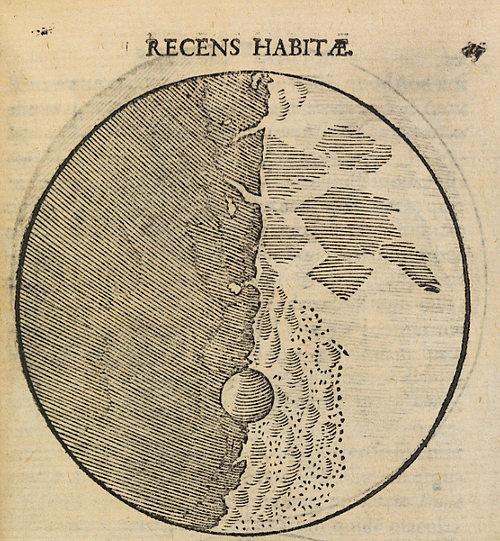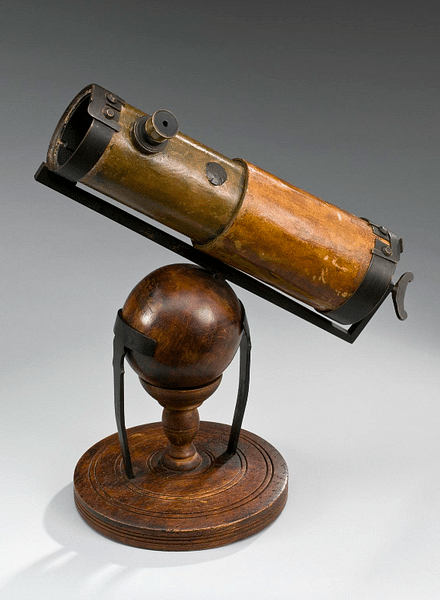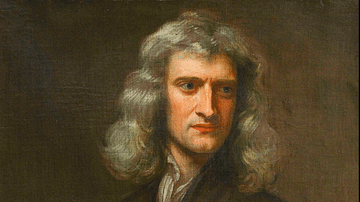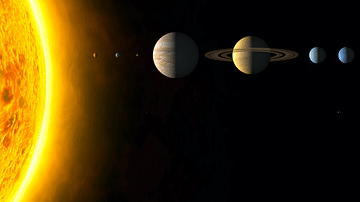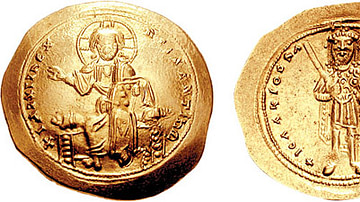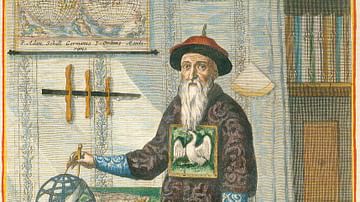The invention of the telescope in 1608 is usually credited to the Dutchman Hans Lippershey. The astronomical telescope became one of the most important of all instruments during the Scientific Revolution when figures like Galileo (1564-1642) and Isaac Newton (1642-1727) used it to provide evidence for bold new theories about the heavenly bodies and the nature of the universe itself.
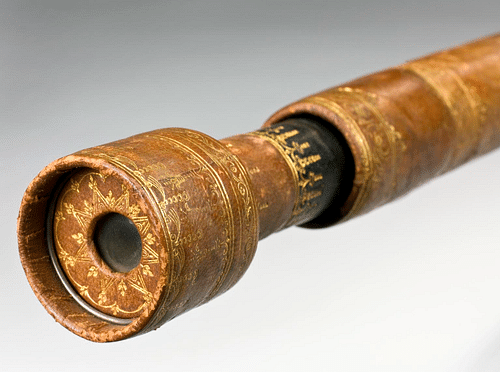
Humans have been studying the night sky for millennia, while astronomers from Ptolemy (90-168) to Nicolaus Copernicus (1473-1543) were able to formulate theories on Earth's relation to the Sun, the Moon, and other planets using only the naked eye. Perhaps the greatest astronomer prior to the invention of the telescope was the Dane Tycho Brahe (1546-1601), who was particularly preoccupied with measuring the elevations of certain observable heavenly bodies. Johannes Kepler (1571-1630) was another key pre-telescope figure (before he made his own versions of the new instrument); Kepler formulated a new set of laws for planetary motion, that they moved in elliptical orbits, not perfect circles around the Sun. These endeavours over generations had accumulated great knowledge but also perpetuated many incorrect theories. There was an ongoing debate as to who possessed the truth about the heavens, a discussion frequently coloured by additional prejudices, especially religious views. The telescope quickly opened up a whole new area of scientific inquiry and a means to test many of the conflicting theories against the physical evidence of detailed and prolonged observation.
Lippershey, Galileo & Kepler
The history of early telescopes is even more obscure than the often hazy view obtained from this important invention's early lenses. What is clear is that it became a crucial scientific instrument. Combining different lenses or lenses and mirrors in a single instrument went back to antiquity, but the idea to use such components in a single device that could bring distant objects closer to the eye first appeared in England and Italy in the 16th century. However, the first recognisable telescope device that used a convex lens and a concave lens set in a long tube is generally thought to have been invented in 1608 by Hans Lippershey (c. 1570 to c. 1619) in the Netherlands. Lippershey was a maker of spectacles, but his attribution as the inventor of the telescope is problematic since two other Flemish spectacle makers disputed his claim. Whoever it was that made the first practical telescope, the combination of the two types of lenses set far apart, one magnifying and the other miniaturising, gave a clear image of distant objects and revolutionised how the world and heavens could be viewed. The idea was so beautifully simple that people copied it readily and built their own telescopes without ever having seen an original. Galileo was the most famous of these imitators, and he managed, by building successively more efficient instruments, to create the most powerful existing telescope with a magnification of 33 diameters. Galileo's telescope, what he called his occhiale ('eyeglass'), had two lenses set at either end of a lead tube around 60 cm (24 in) long.

Galileo used his new telescope to study the heavens in tremendous detail, publishing the fruit of his research in Sidereus Nuncius (The Starry Messenger) in 1610. Galileo was able to observe the Moon and note that its surface seemed similar to Earth's with mountains and valleys, suggesting it was not, as many had previously thought, made of some entirely different matter. Galileo spotted the four largest moons of Jupiter, studied the composition of the Milky Way, and identified the phases of Venus. Many new stars could now be observed, which gave credence to the theory that the universe was not a sphere but an infinite body, literally an infinite space worthy of a capital 'S'. As an example of what might be learnt and what theories may be confirmed from mere observation, Galileo here describes the sunspots on the Sun, which he could see through his telescope, a phenomenon not unknown in antiquity but not in any detail:
The dark spots seen in the solar disk by means of the telescope are not at all distant from its surface, but are either contiguous to it or separated by an interval so small as to be quite imperceptible…They vary in duration from one or two days to thirty or forty. For the most part they are of most irregular shape, and their shapes continually change, some quickly and violently, others more slowly and moderately…Besides all these disordered movements they have in common a general uniform motion across the face of the sun in parallel lines. From special characteristics of this motion one may learn that the sun is absolutely spherical, that it rotates from west to east and around its own centre, carries the spots along with it in parallel circles, and completes an entire revolution in about a lunar month.
(Fermi, 57).
Like Galileo, Kepler also designed his own telescope, the true astronomical version, in 1611. Kepler's instrument used two convex lenses, which gave a much clearer image; the downside was that this image was seen by the observer upside down. The drawback limited the spread of the astronomical telescope as opposed to the device we might now call a marine or terrestrial telescope, which was used for the observation of distant objects on land or at sea. By the mid-17th century, the astronomical telescope was more widely adopted. During the Scientific Revolution, however, the greatest flaw in the device was the lack of technology to make high-grade lenses. Galileo was streets ahead of everyone else in this area but would not reveal exactly how he ground his fine lenses. Despite the technical problems, the leap forward in massively extending human sight was a marvel that captured the imagination of scientists and the general public alike.

Opposition to the Telescope
The telescope might have been a wonder, but there were plenty of sceptics regarding this new-fangled instrument, as here explained by the historian J. Henry:
It is well known, for example, that some of Galileo's contemporaries refused to look through his telescope. Why did they respond in this way? Obviously not because of any astronomical technicality. Part of the answer is that magicians, and even common conjurors, used combinations of mirrors and lenses to fool people; and as artificially constructed objects, it was by no means obvious to contemporaries that telescopes could provide reliable knowledge about what was natural.
(6)
There was also a reluctance by Aristotelian natural philosophers (who tasked themselves with explaining the physical world) to incorporate into their thinking the findings of instruments like the telescope, which provided information on otherwise unobservable matters. The Church was not happy either with those astronomers who challenged their worldview. The work of Copernicus was already on the Catholic Church's Index of Forbidden Books, and Galileo was admonished, too. In reality, most astronomers of the age were not interested in challenging religious orthodoxy and did not view their new discoveries using telescopes as necessarily challenging a universe created as described in the Bible. Indeed, Newton, for example, suggested that a comet striking the Earth might explain the Great Flood of the book of Genesis.
The new sights made available by the telescope did raise troubling questions for some. If the Sun had a changing surface, what else was changing in the universe? If the Sun was not a static example of divine perfection, then what exactly was its purpose? If the Moon had an Earth-like surface, what about other satellites and even planets? If the geographical features of certain heavenly bodies were similar to Earth, could there not be life elsewhere in the universe? Now that one realised the new infinite scale of the universe, what did Earth look like if one was looking at it through a telescope from Jupiter? In short, the whole concept that Earth and humanity were the centre of all things, a reassuring idea perpetuated by the geocentric theories of Ptolemy, had finally collapsed.
Whatever the opposition, the telescope was here to stay. While many scientists made their own telescopes and ground their own lenses, specialist telescope makers soon appeared, notably in Italy. Miniature telescopes were fitted to existing navigational instruments like the quadrant. Small telescopes with reduced magnification were soon used everywhere by the military on land and by navies at sea. These were small affairs with a reduced magnification since any more than x20 would mean the image was blurred and the coverage too zoomed-in, given the distance of any given physical horizon (like using binoculars in a library).
One of the telescope's first important appearances in literature is the 1667 poem Paradise Regained by John Milton (1608-1674), where it is suggested the Devil shows Jesus the kingdoms of the Earth using a telescope on a mountaintop. The new worlds that the telescope had opened up kicked off a new genre of literature – science fiction – with such early works as Francis Godwin's The Man in the Moon (published in 1638), a story of a voyage to the Moon. Many similar works followed through the 17th century.
Further Developments
The telescope continued to be developed. A typical astronomical telescope of the 17th century was around 15 metres (50 ft) long. Johannes Hevelius (1611-1687) in Danzig (modern Gdańsk) made one 46 metres (150 ft) long in 1647 (he used this to map the Moon but remained curiously reluctant to use his device for measuring the movement of stars and planets). Larger and larger telescopes were made towards the end of the 17th century, which had a more elaborate system of lenses that were sometimes many metres apart inside the tube or without any tube at all, a device called the aerial telescope. The secretary of the Royal Society in England, Henry Oldenburg, gives the following description of one of the society's new telescopes in 1664: "We have constructed a telescope 60 feet long, recently finished by our countryman [Richard] Reeve, whose object glass of about five inches diameter bears an aperture of 2.5 inches" (Jardine, 47). The instrument was estimated as having a value of £100 (£17,000 or $21,500 today).
Technical additions to the telescope continued. Micrometers were added to take more precise measurements, especially of angles. There were double telescopes, which allowed two observers to view the same object. The reflecting telescope, which could be made smaller than a refracting telescope, was invented in 1668 by Isaac Newton. This type used a curved mirror made of a tin and copper alloy, which improved the clarity of the image seen by reducing chromatic aberration, that is when all colours fail to converge in a single point (a problem of glass lenses at the time). Newton's telescope had a magnification of 40 times and was ten times shorter than a refracting telescope of the same strength would have been. In the 18th century, lenses made of different types of glass reduced the problem of chromatic aberration. For use over shorter distances on land or sea, the double telescope – binoculars – allowed the instrument to be held more steadily and provide a three-dimensional view where distance could be better judged. Galileo actually invented a pair of binoculars, but they did not become common until the 19th century.
Purpose-built observatories housed a single or group of astronomical telescopes, and governments often funded a national observatory such as those in Paris (founded in 1667) or Greenwich (founded in 1675) in the hope they would provide better charts and answer practical navigational problems. Other states followed suit so that observatories using telescopes sprang up in unlikely places, such as the Kingdom of Siam (Thailand) in the 1680s and Jaipur in India in the 1720s.
A Lasting Legacy
With more and more technical improvements, the telescope became an ever-more useful instrument to astronomers. Edmond Halley (1656-1742) – most famous for predicting the return in 1758 of the comet he observed in 1682 and which now bears his name – used an observatory on St. Helena in the South Atlantic in 1677 to make the first chart of the stars of the Southern Hemisphere based on observations made via telescope. There was now the possibility to measure the movement of planets, their moons, and the stars in relation to each other and to accurately calculate the distance between the Earth and the Sun. Gian Domenico Cassini (1625-1712) was even able to use a telescope not only to spot four moons of Saturn but also to identify the spaces between the rings of that planet.
More accurate astronomy led to developments in related fields such as physics and the Theory of Gravity proposed by Newton and, thanks to the investigations of Ole Rømer (1644-1710), the fact that light travels at a finite speed. If anything, the telescope had revealed just how little was known about the heavenly bodies, but scientists would slowly increase their knowledge using ever-more powerful instruments. This process is still ongoing, of course, with images and data garnered from such incredibly sophisticated instruments as the Hubble Space Telescope, launched in 1990. Operating beyond the optical impediment of Earth's atmosphere, Hubble and others like it are capable of capturing images far into deep space. In perhaps the nearest we will ever reach to time travel, we can now, thanks to the telescope, see events in space that happened long before the first human ever gazed at the skies and wondered at the mysteries of the universe.
